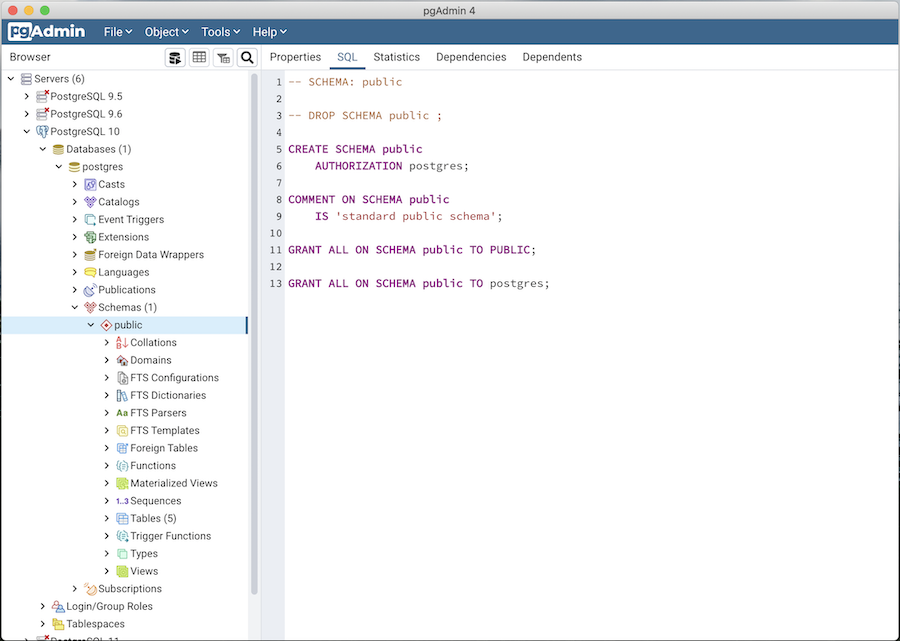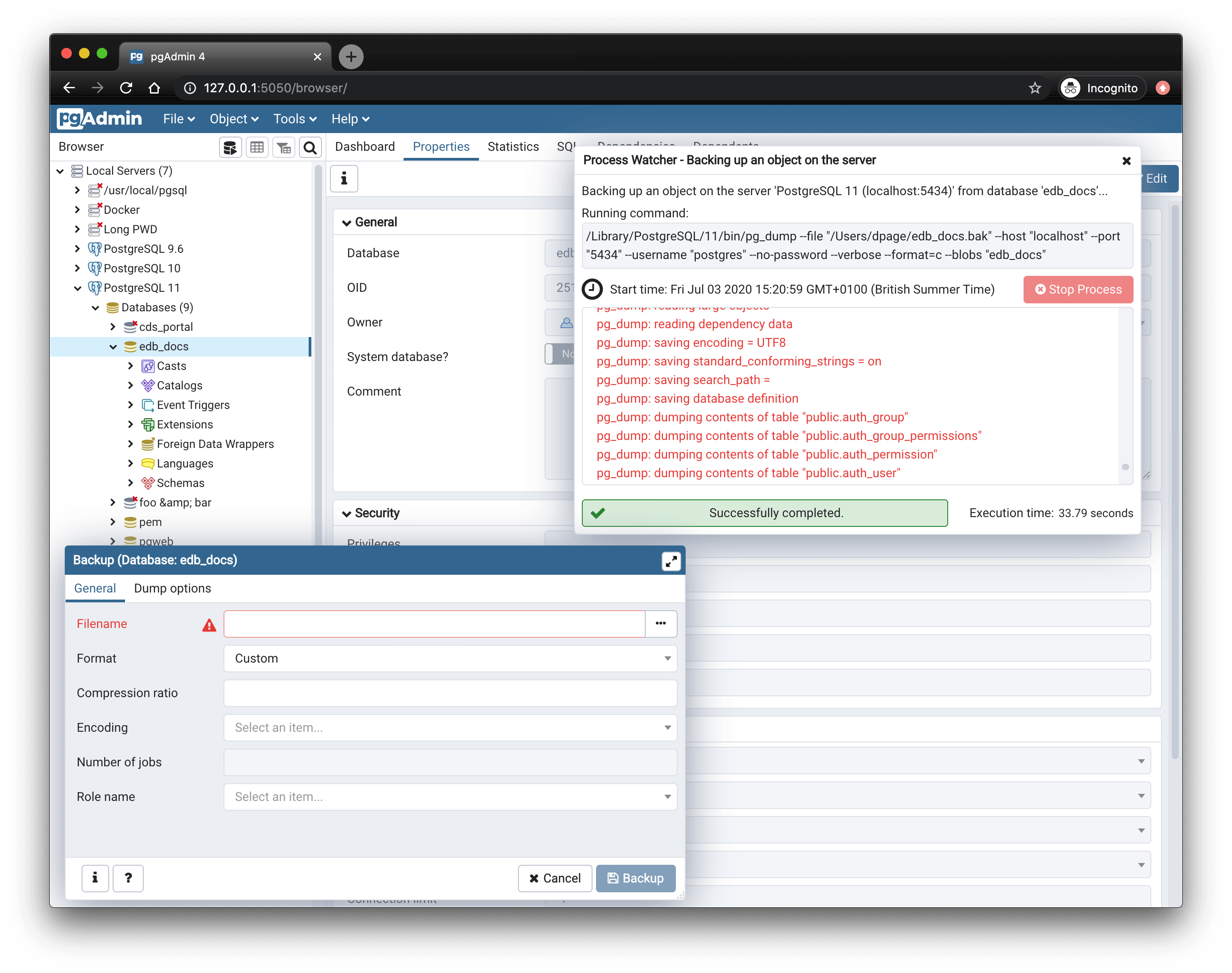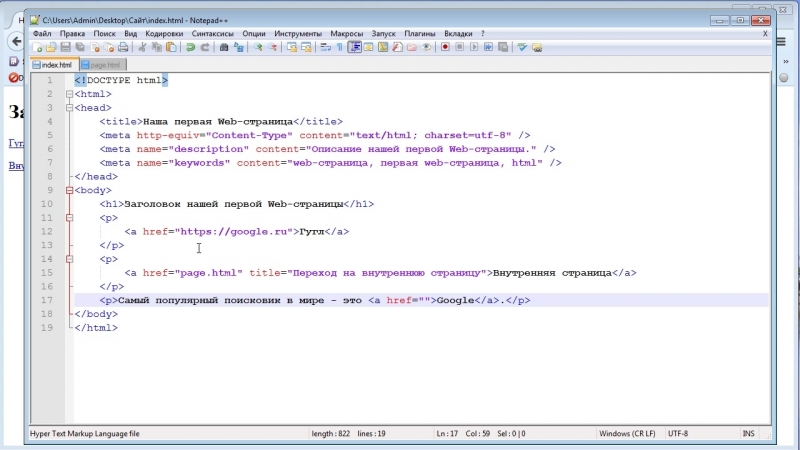

- PGADMIN 4 POSTGRESQL 11.2 SUPPORT HOW TO
- PGADMIN 4 POSTGRESQL 11.2 SUPPORT INSTALL
- PGADMIN 4 POSTGRESQL 11.2 SUPPORT UPDATE
- PGADMIN 4 POSTGRESQL 11.2 SUPPORT CODE
Install elasticsearch and start the service which relied on Magento. Remember to restart PHP services after updated php.ini % brew services restart composer as the PHP package management tool % brew install composer
PGADMIN 4 POSTGRESQL 11.2 SUPPORT UPDATE
Then update following settings: memory_limit=2G There are some configures you need to set in php.ini % vi /usr/local/etc/php/7.3/php.ini % brew install brew link -force brew services start installed, open a new terminal to confirm the latest php7.3 has been installed: The default PHP version is PHP8 by brew however Magento2 doesn’t support it so we need to install a downgraded PHP7.3 version and start the service for php-fpm mode which will be occupying port 9000. Mysql has been installed successfully and configured properly. % mysql> ALTER USER IDENTIFIED WITH mysql_native_password BY '123456' Ĭreate new Magento database: % mysql -uroot -p123456 Save then restart MySQL service % brew services restart mysql

# use the following commands to find out where it is # If my.cnf file doesn't exist in the directory '/usr/local/etc' #add the below line in the section ĭefault-authentication-plugin=mysql_native_password

Secondly, install MySQL8, start the service and create the database % brew install mysqlĮdit my.cnf to run MySQL8 with native password authentication % vi /usr/local/etc/my.cnf The article logs my process of using Nginx1.19 + php7.3 + MySQL8 to build the test environment of Magento on my MacBook(macOS Big Sur 11.2.1), I hope it is helpful for you.īefore starting the installation, you need homebrew installed on the computer.įirstly, install Nginx and start the service % brew install nginx $geo_json = json_decode($cb) įoreach ($geo_json->coordinates as $k => $v) ) $tile_pixels = tile_to_pixel($zoom,, $image_size) $cbs = Meshblock2018Generalised::getByBounds(, ], true)
PGADMIN 4 POSTGRESQL 11.2 SUPPORT CODE
This is the main part of the source code in PHP7+Laravel8 // Get all meshblock record from PostGIS Combine with the image width and height.Draw the polygons using PHP function imagepolygon.Calculate every point’s real position to the image, use the point position(px, py) minus start point(sx, sy), then you can get the point’s position in the image.Set the boundary axis start point position(sx, sy), end point position(ex, ey), image width, and image height.Convert every point from lon&lat coordinates(lat, lng) to point position(px, py) (Refer ESPG3857 Web Mecator).It is pretty easy to do it with the PostGIS’s internal funciton: SELECT ST_ASGeoJSON(geom) AS geom FROM meshblock_2018_generalisedįinally, to draw these polygons in the png file, we need to Thirdly, we need to get geographical data, all geo data is saved in the geometry field “geom”, we need to convert it to GeoJSON format then we can draw polygons. Secondly, import the data into PostGIS database, you can use the ogr2ogr tool to import it, the reference command is here: %ogr2ogr -f PostgreSQL "PG:user=postgres password=123456 host=localhost dbname=meshblock_2018_generalised" meshblock-2018-generalised.gpkgĪfter downloaded, you can access all data from the table “meshblock_2018_generalised” in PostGIS. Log here the whole process and I hope it is helpful for you in your project.įirstly, download the original boundary data from the StatsNZ official website, I chose meshblock 2018 with the WGS 84(EPSG 4326) projection for my graphic.
PGADMIN 4 POSTGRESQL 11.2 SUPPORT HOW TO
I have been researching how to demonstrate some New Zealand statistical data in a geographical map service recently and drew a beautiful all NZ boundary map using PHP.


 0 kommentar(er)
0 kommentar(er)
